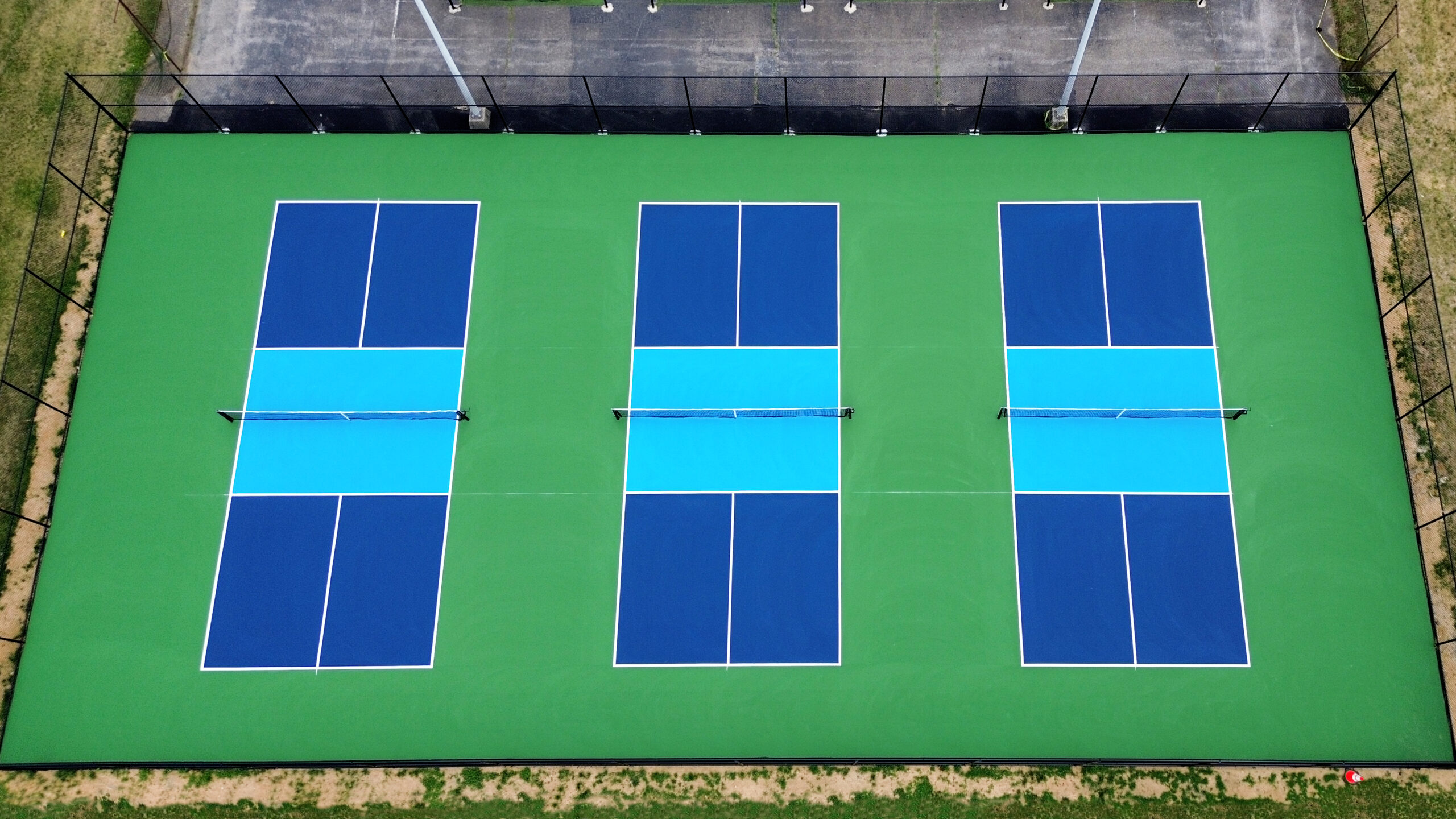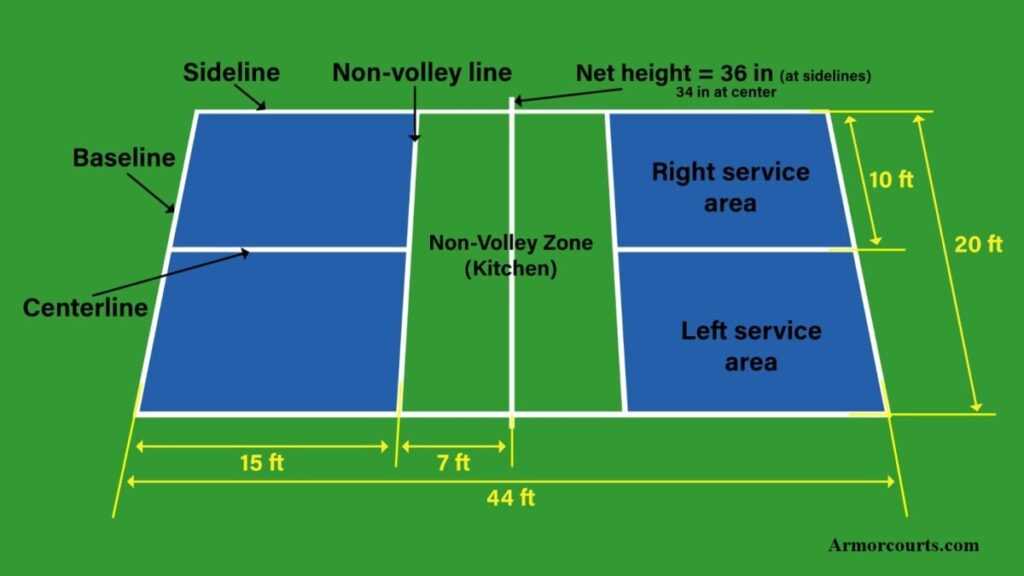Lasting Practices in Pickleball Court Building And Construction You Need To Know
As the appeal of pickleball proceeds to rise, so also does the need for sustainable techniques in court construction. The effect of these techniques prolongs far past the court itself.
Choosing Eco-Friendly Materials
Selecting environmentally friendly products is a vital action in the building and construction of sustainable pickleball courts. The selection of sustainable materials not just lessens environmental effect however likewise boosts the longevity and performance of the court. Key materials include recycled rubber for the surface, which provides exceptional durability and shock absorption while diverting waste from landfills.
Additionally, using in your area sourced materials decreases transportation exhausts and sustains regional economic situations. Pickleball court construction. As an example, utilizing indigenous hardwoods for secure fencing and seats can offer a sustainable aesthetic while ensuring strength versus the elements.
Incorporating absorptive materials for court structures can even more add to sustainability by permitting all-natural water drainage and minimizing runoff. These selections not only secure local ecosystems however also promote much healthier play atmospheres.
Reliable Drainage Solutions
While the option of green materials is crucial, carrying out efficient water drainage solutions is similarly important for maintaining lasting pickleball courts. Correct drainage not only shields the court surface area from water damage however also lessens disintegration and overflow, advertising ecological integrity.
Effective drainage systems can include permeable paving, which enables water to penetrate the ground instead of pooling externally. This decreases the probability of standing water, which can cause mold and mildew and various other maintenance problems. Furthermore, incorporating strategically positioned water drainage networks and swales can guide excess water away from the court location, making certain a completely dry playing surface area and protecting against dirt erosion.
Utilizing indigenous plants in the landscaping around the courts can even more enhance water drainage by soaking up excess water and minimizing overflow. These plants call for less watering and promote biodiversity, aligning with lasting methods.
Additionally, it is critical to on a regular basis maintain the water drainage system to ensure its lasting performance. This consists of clearing up particles and tracking for clogs. By prioritizing efficient drainage solutions, pickleball court contractors can considerably add to the sustainability and durability of the center, inevitably benefiting both players and the atmosphere.
Energy-Efficient Illumination Options
As the need for pickleball proceeds to expand, integrating energy-efficient illumination options into court style has actually come to be progressively crucial for sustainability. Typical lights systems often consume extreme power, adding to greater functional expenses and environmental effect. As a result, taking on modern-day, energy-efficient modern technologies is important for both brand-new building and constructions and improvements.
LED (Light Emitting Diode) illumination attracts attention as a leading option due to its durability and energy savings (Pickleball court construction). Compared to traditional lights, LEDs use around 75% much less energy and can last up to 25 times much longer, significantly decreasing upkeep prices. Moreover, the directional nature of LED lighting lessens light air pollution, ensuring that lighting is concentrated on the court instead than bordering areas.

Sustainable Surface Area Alternatives
Discovering sustainable surface choices for pickleball courts has acquired traction amongst builders and players alike. The emphasis on green materials not only lines up with the growing environmental awareness but additionally boosts the efficiency and toughness of the courts.
One prominent alternative is the use of recycled rubber, which can be sourced from made use of tires. This material offers outstanding shock absorption, reducing the threat of injuries for gamers while advertising sustainability. Furthermore, modular tiles made from recycled plastics provide another viable alternative. These ceramic tiles are simple to install and change, and their convenience permits various court arrangements.
Natural yard courts are also emerging as a lasting choice, check that promoting biodiversity and lowering the warmth island impact. They need normal upkeep and water, which might not line up with all sustainability goals.

Water Conservation Strategies

An additional efficient strategy entails the installation of rain harvesting systems. These systems store and gather rain for usage in keeping court surfaces and landscape design. This method not just saves safe and clean water but likewise lowers reliance on local resources.
Moreover, utilizing drought-resistant landscape design around the courts is important. Indigenous plants require less water and are better adjusted to neighborhood climate conditions, therefore reducing general water intake. Additionally, utilizing effective watering systems, such as drip watering, guarantees that water is provided straight to plant origins, reducing evaporation and waste.
Verdict
Incorporating sustainable practices in pickleball court construction substantially adds to environmental preservation and resource efficiency. Utilizing environmentally friendly products, applying reliable water drainage services, and adopting energy-efficient lighting alternatives can considerably lower eco-friendly impact. Furthermore, exploring lasting surface alternatives and employing water preservation methods enhance the total sustainability of these entertainment facilities - Pickleball court construction. By prioritizing these practices, the construction of pickleball discover here courts can straighten with broader ecological objectives while promoting long life and functionality within communities.
As the appeal of pickleball proceeds to rise, so too does the requirement for lasting practices in court building and construction.Choosing green materials is a critical step in the building of sustainable pickleball courts. By prioritizing energy-efficient lights alternatives, pickleball court contractors can contribute to a much more lasting future while meeting the requirements of gamers and stakeholders alike.Including lasting surface area choices not just boosts the efficiency of pickleball courts but also paves the way for implementing effective water preservation strategies.Including lasting methods in pickleball court construction considerably adds to ecological conservation and resource performance.